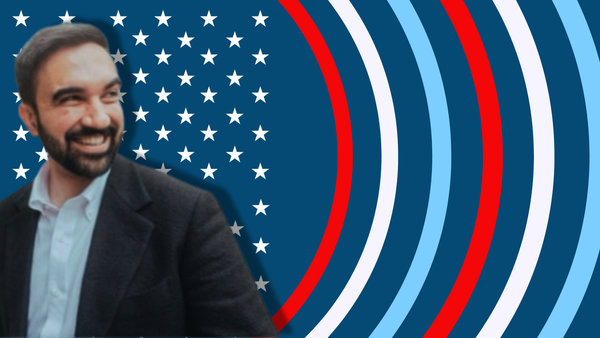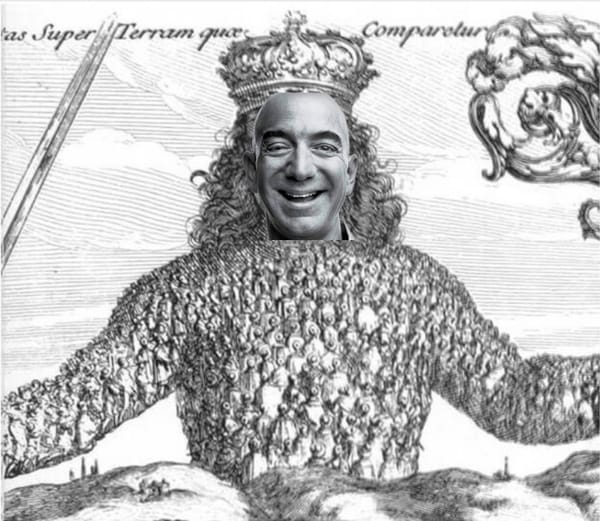A shadow cabinet can help Democrats make the most of the moment

A shadow cabinet is a common feature of political life in other democracies. A kind of alternate vision of the present, offered by the party not currently in power, so that constituents can get an immediate sense of what the other party would do if the most recent election had gone the other way.
The idea is simmering in American liberal sewing circles now. What if Pete Buttigieg offered a regular counter to the condescending madness of a Karoline Leavitt presser? What if Tim Walz gave weekly chats on the state of the American military under the tipsy leadership of Pete Hegseth? Some see the vision in AOC’s regular, dressed down streams on Instagram and imagine generalizing that model with other members of the Democratic bullpen.
The issue, of course, is that everyone in the bullpen actually wants to be on the mound winding up their fastball.
Shadow cabinets (often called an “official opposition”) work in European democracies because their parliaments are deeply dependent on their parties. Their constitutions formed with partisanship in mind, and the highest elected official of most European countries is a prime minister who wasn’t elected by the national body of voters, but rather by the representatives of the party that won the most seats. Voters go into those parliamentary elections knowing who the candidates for prime minister are, of course, but with a few exceptions, they don’t directly elect them. This gives the parties immense power. The official opposition works because the opposition party already has a “shadow prime minister,” in the form of their official party leader.
The American republic is an older system. It was crafted by men who knew partisanship was inevitable, but who saw it as an unfortunate necessity to be minimized, rather than a central feature of democratic government. In other words, our parties do not have such power over their candidates. In most states, they literally cannot prevent a candidate from running on their ballot line. Republicans have recently exploited this weakness to dramatic effect.
So, the lack of centralized party control over anything but the money means that every single potential member of the Democratic “official opposition” would be competing with all the others for the ultimate prize—the party’s presidential nomination. That isn’t exactly a recipe for successful intra-partisan cooperation.
But what if it was? What if the very fact of our system is actually the reason this could work? Sort of, anyway. I don’t think this is a case of outthinking myself, so hear me out.
A shadow cabinet is a performance. It’s a TV show by nature—and Americans are very good at making TV shows. We can use it to demonstrate how the current moment could be different, to craft stories that voters can project onto the future. We can create a party brand that draws attention, maximizes eyeballs, and creates space for political positioning. In an economy of attention, eyeballs are currency.
Chris Hayes talks about the economy of attention in his recent book, The Siren’s Call, if you’d like to learn more.
You might object to the obvious performance. There’s a strong instinct (an outdated one) among liberals to code “political theater” as tacky. That could not be more obviously wrong if Donald Trump held a rally in your living room. Carefully crafted, intentional political theater is a great asset. Imagine Cory Booker’s marathon speech from the senate floor, but there are new updates every day. Imagine a daily reminder of the depth of the Democratic field. Imagine giving the fruit of that field space to soak up the sun.
There are many talented Democratic leaders with vision and ambition, looking for ways to position themselves for future success. Some seem primed to soft launch their primary campaigns soon. If they do, it’ll trigger others to do the same. Soon, the launch won’t be so soft and election season will be underway. Such an early start would risk turning blue voters (metaphorically) red with each others’ (metaphorical) blood in a brutally long campaign. It may also attract a bit of destructive attention (which, Donald Trump’s methods aside, is still mostly unhelpful for anyone else, in my opinion), by taking attention away from constructive resistance to the thundering authoritarianism we’re all facing and focusing it on the spectacle of a primary. We’ll exhaust the electorate and further degrade the party.
A carefully choreographed official opposition could be just the thing. It gives space to the biggest rising stars, who perform their roles as a unified front under common branding. It lets them grow in the sun, and allows them to work out future positions similar to how primaries do, but without all the exhaustion and blood.
How can we do it?
There should be no “opposition president.” That’s too suggestive. It gives too much to the person that gets it and undermines the party-first nature of the project. Instead, they should keep it to opposition secretaries, with a directorial position set aside that we’ll discuss in a bit. The remit of these opposition secretaries should also be more broad than any of their formal counterparts in power. First, there’s no reason to go bar-for-bar with the actual Executive Branch. We’re going for attention and maximum return on investment, which means focusing on the things that draw eyeballs.
Something like:
- Chair of Defense and National Security
- Chair of Taxes and Budget
- Chair of Justice and Law
- Chair of Energy and Environment
- Chair of Health and Infrastructure
There’s no practical limit. The point is to give each leader a broad portfolio for them to flex their skills within.
The opposition secretaries should each have a team working for them, but reporting to the director. Their deliverable should be a steady stream of regular, party-branded content that communicates the priorities of the opposition secretary to whom they’re assigned.
This will keep the project aligned, help rebuild the party’s putrid brand, showcase the bench, and develop real policy that can confront the looming challenge of rebuilding after this administration. The goal here isn’t to elevate any particular Democrat, but to confront the woeful reputation of the party as a whole, and create the rising tide that lifts everyone’s boat.
Again, this has to be carefully choreographed. This requires good faith, genuine ambition, and a little bit of self-sacrifice. I don’t worry a lot about the first two things, but number three may be tricky.
How could you pull it off? The director has to be someone who can keep all the horses corralled, but not someone who’d be a contender for the nomination at the end. Even better if they’re not actively wielding power. A couple of names spring to mind, but let me dissuade you from them before I raise my personal suggestion.
Barack Obama: He’s already served two terms, he’s out of the hunt. He wields more informal power than any other Democrat breathing.
And that’s the problem. Obama’s involvement would immediately tilt the gravity toward him and away from the project. It would also violate the longstanding tradition that former presidents stay out of active politics. While the current president lit that precedent on fire (along with everything else), and Obama has dipped his toes in that water a bit, he doesn’t seem overly keen to turn it all the way on again. Nor should he. At the core of this project is rebuilding a healthy republic. We can’t do that if we’re encouraging personality cults around a leader from the previous generation at the expense of cultivating the next generation.
Hillary Clinton: She’s very unlikely to run again, but also wields an incredible amount of soft power in the party. Furthermore, she’s a capable operator who could manage this kind of project easily.
But she could run, if she wanted to. And again, she’d outshine the other participants and the larger mission. And like Obama, her presence would create an easy target for GOP counterprogramming in a way that would likely sabotage the project.
I do have a preferred candidate. But beyond him and the two above, there are a handful of potential leaders that could (I think) do the trick. But I could be wrong. It’s important to keep the objections to Clinton and Obama in mind for everyone.
Some of them are:
- Michelle Obama
- Nancy Pelosi
- Jerry Brown
- John Kerry
Each has some weakness or other. Michelle Obama seems unlikely to be interested. Pelosi is still in Congress and wielding intra-partisan power toward particular ends (like whipping votes for the late Congressman Connolly over AOC). Jerry Brown probably doesn’t have the clout to wrangle competing ambitions. Ditto John Kerry.
There’s no perfect version of this. Like I said, ambition is necessary on the part of the members, but so is good faith and self sacrifice. This can only work if it’s something all parties choose to believe in enough to cooperate.
All that said, my choice would be Al Gore. That might seem like a rocket from left field, but he’s been putting himself back in the spotlight lately. He has extraordinary credibility within the party, but he hasn’t been anywhere near power in over two decades. He’s soft-spoken but passionate, and imminently qualified. He’s a leader with a long but dated experience in intra-party alignment and the executive branch. He won’t outshine any presidential hopefuls in the organization, but he can take the lead and execute the mission.
Whomever is chosen to lead should, ultimately, be beside the point. This is a project to rebuild the brand of the party going forward and to let the field of the future strut their stuff while doing it. These representatives should stand in for the party at every opportunity. Many of the likeliest people already are. Tim Walz and AOC are doing rallies all across the country, with special attention to red districts. Pete Buttigieg is flexing his muscles on podcasts and interviews in a way that showcases his strength as a communicator. Andy Beshear is regularly on television talking up his work as the popular and progressive blue governor of a conservative red state.
These would all be admirable additions to the bullpen. The job of the director (Gore, in my version of this) is to make sure the candidates stay more or less on message—that is, not simply dragging the president, but specifically crafting liberal counter-messaging to the actions of his administration. This is key. We must be more than a party of the status quo and old institutions. We must sell a future people can believe in.
The next recommendation I have might be a harder sell in the conflict-averse depths of the DNC, I fear.
This should be a fundamentally liberal project. It should offer an alternative, not triangulate and compromise in advance. It should create an image of America remade in our values, not Donald Trump’s. Or Ronald Reagan’s. Republicans remade America in their image, despite not really commanding a comfortable majority of voters in a generation, because they built a vision they could sell to voters. When the time came, it didn’t matter that the vision was a lie. People voted for it anyway. Now, the reality has turned America into a yard sale for wannabe gangsters and enemy governments. People need something new to believe in; something to make them believe in the power of democracy again. The Democratic project should give them that.
This is choosing a side, which the DNC doesn’t like to do, but must learn to do. There’s still a simmering debate over the causes of the failure of 2024. It’s pointless. The argument is between observable reality and a fever dream. The counterargument would have it that Democrats have abandoned moderate voters. They manifestly have not. Kamala Harris ran a very right wing, very “safe” campaign . She lost. Much of the data suggests the primary cause of her loss was depressed turnout among Democrats.
Therefore, we should lock onto our core values, our real beliefs, and offer a true alternative vision of America rooted in the principles of freedom, fairness, and prosperity. This view is supported further by the results on the ground. In special elections all across the country, Democrats have been overperforming the results of 2024, often dramatically, while campaigning specifically on things like expanding healthcare and protecting trans rights.
None of that excludes welcoming more conservative voters into the coalition, either. It’s an issue of framing and persuasion. The Democrats are the party of freedom. You should be free to be who you are, love who you love, to work hard and make enough to live the dream, change jobs without losing healthcare, to get a good education, have kids when you want and if you want, and to pass that freedom along to them. These are values anyone who would ever be willing to vote for Democrats can easily align with. This project should be ground there and lead with a step forward, rather than constantly playing defense. It’s time to get over the hangover we woke up with in 1992. This is an effort for the future. It should cater to Democratic voters and attempt to create more of them. Conservative Democrats are welcome to campaign and govern as they see fit, but the likes of Senator Slotkin and Governor Newsom probably cannot be the tip of the spear in this way.
Finally, it should be the task of the director to ensure all members of our opposition cabinet get a fairly equal distribution of the attention. These few should be delivering the official responses to things like the State of the Union. They should be delivering helpful explanations of current events, regular fireside chats, rallies, and any and all manner of voter outreach. Party messaging efforts should be routed primarily to this body, through the director, and distributed to the chairs. Any budgeting should be distributed evenly across the project. All data and feedback should be shared in common, for each chair to put to their own use later—yes, even against each other in the primary.
If executed well, the official opposition will give the party fantastic exposure, associating its most promising faces with leadership and vision, and the party with its most promising faces. It will produce invaluable data on what works and what doesn’t, and allow future candidates to field test policies without the damaging frontline combat of a primary campaign.
The goal has to be more than limping to a win every two or four years. We need to rebuild an enduring party apparatus that casts a vision of America people will want to believe in. It starts with building internal cohesion. It starts with projects like this.



